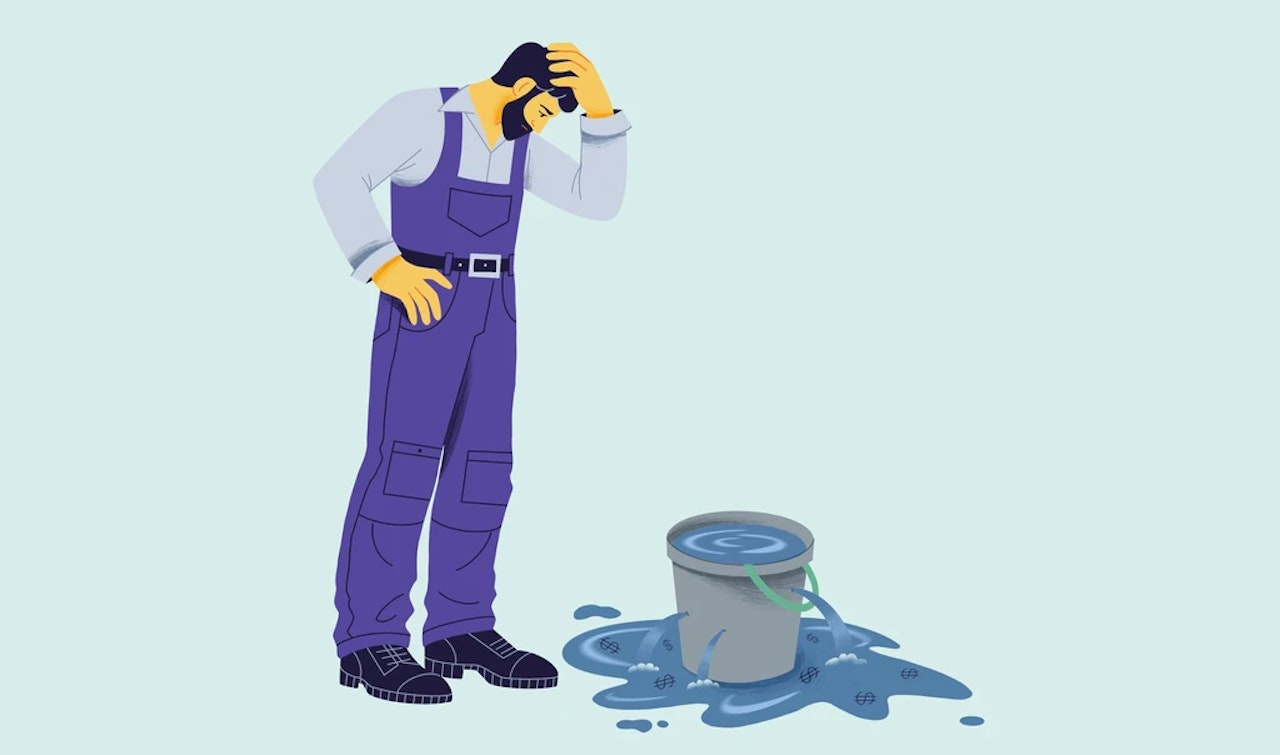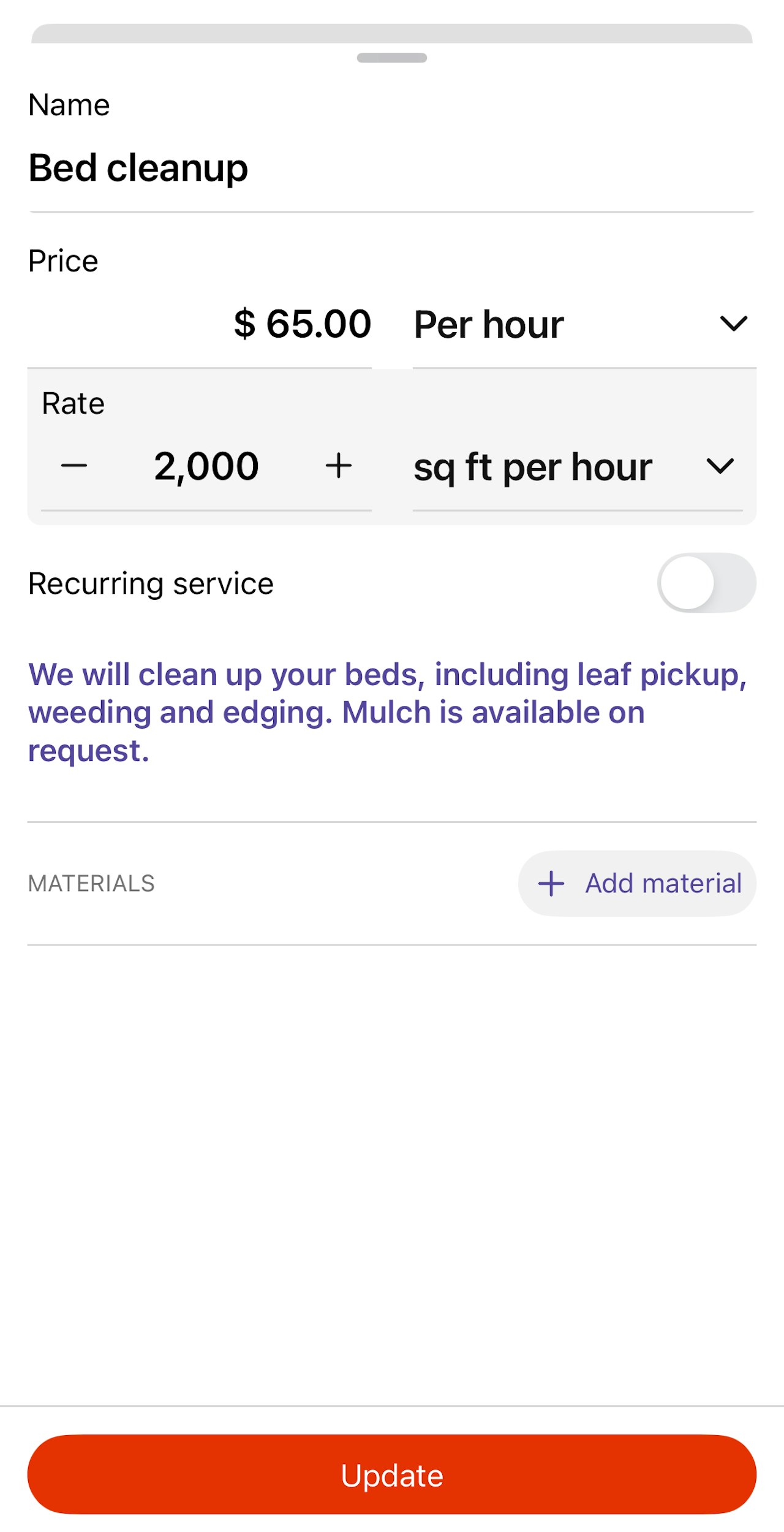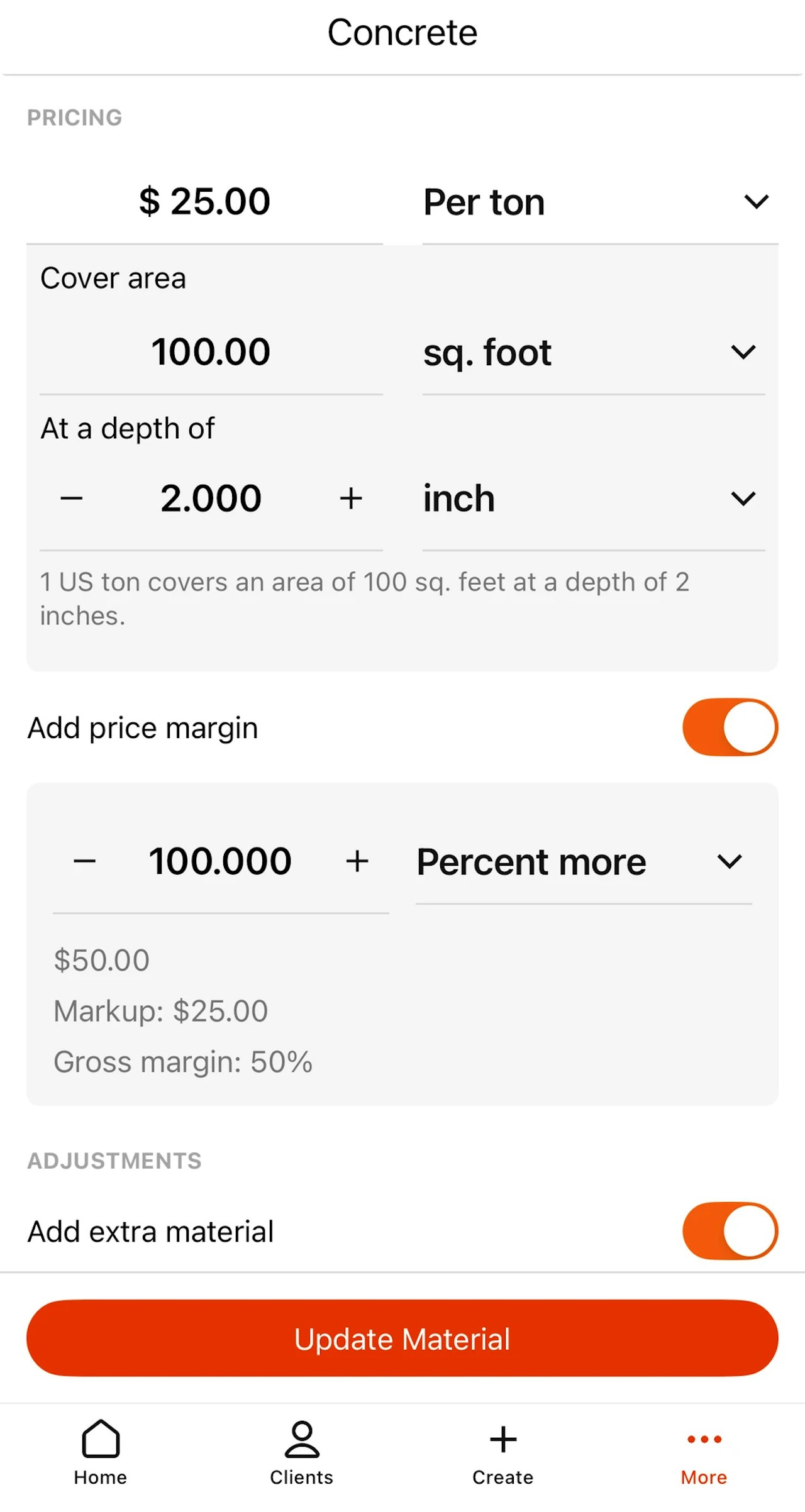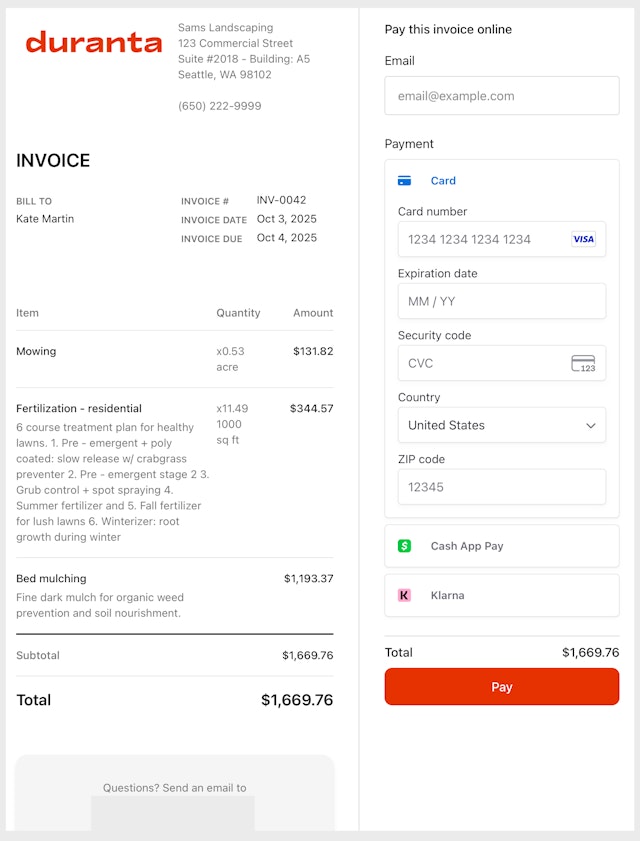According to Mike McCurran, CEO of Image Works Landscaping, a whopping 18.9% of landscaping jobs are unprofitable. Some of this is unavoidable as there are unexpected issues that arise in day to day work, but most of this comes from improperly pricing jobs. Below we give you two ways to help increase your profitability:

 Operations
OperationsJan 19, 2025
How not to mis-price jobs
Correct margins and production rates keep you from leaking profits
Share This Article
Use production rates
The biggest mistake most landscapers make is not understanding the value of their time. That is why it is critical to use production rates for every estimate that you make. Production convert the work to be done, into the hours or days it will take to do it. You then multiply those hours by how much you want to make per hour.

Track your margin
We strongly recommend that you keep track of your buying and selling price. Duranta makes this easy with it’s margin calculator: you can select your buying price, then add your dollar or percentage markup, or your gross margin to get a selling price.

Types of margin
You can track any one (or both) of the margins below:
- Markup is how much you add to the price at which you buy materials, in order to get to the price at which you will sell materials.

For example if you purchase River Rock at $100 per ton and include it in your jobs at $200 per ton, that is a 100% markup.
- Gross margin is the gross profit on the job divided by the jobs revenue. In the example above, the gross margin is 50%.

In general, landscaping jobs should have a gross margin of about 50%
Tracking margins can be easy
Once you record your prices, in addition to calculating your margins, Duranta will do all the math of converting between units like weight and volume. For example, if you buy gravel from your dealer in dollars per ton, but need to price a job in terms of cubic yards, Duranta will automatically do the conversion and apply the margin for you.
Building a profitable business
To avoid leaking money on landscaping and lawn care projects, make sure you use production rates and you track your margins. This ensures that you are valuing your time, and building a strong, profitable business.
 Related
Related


